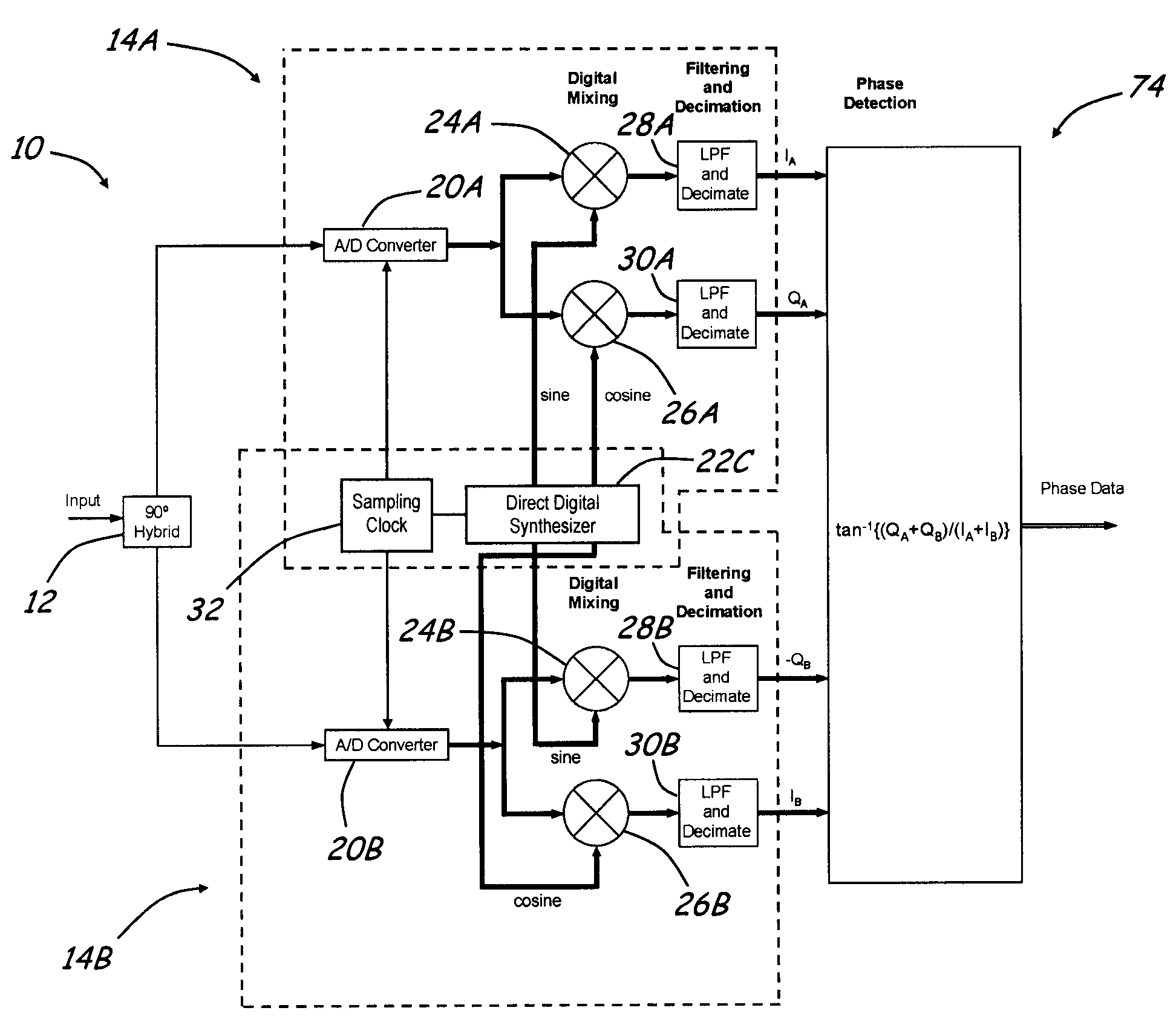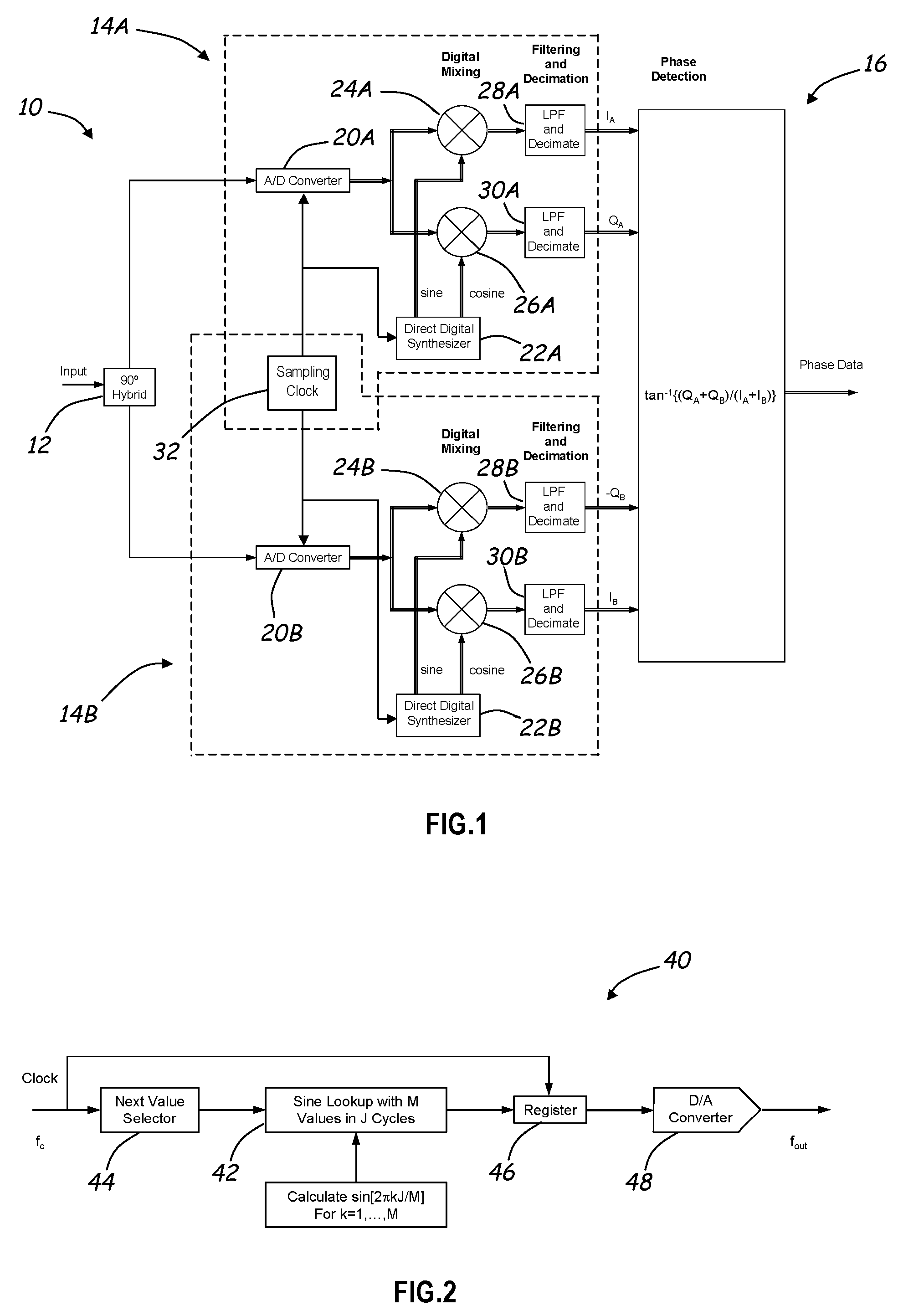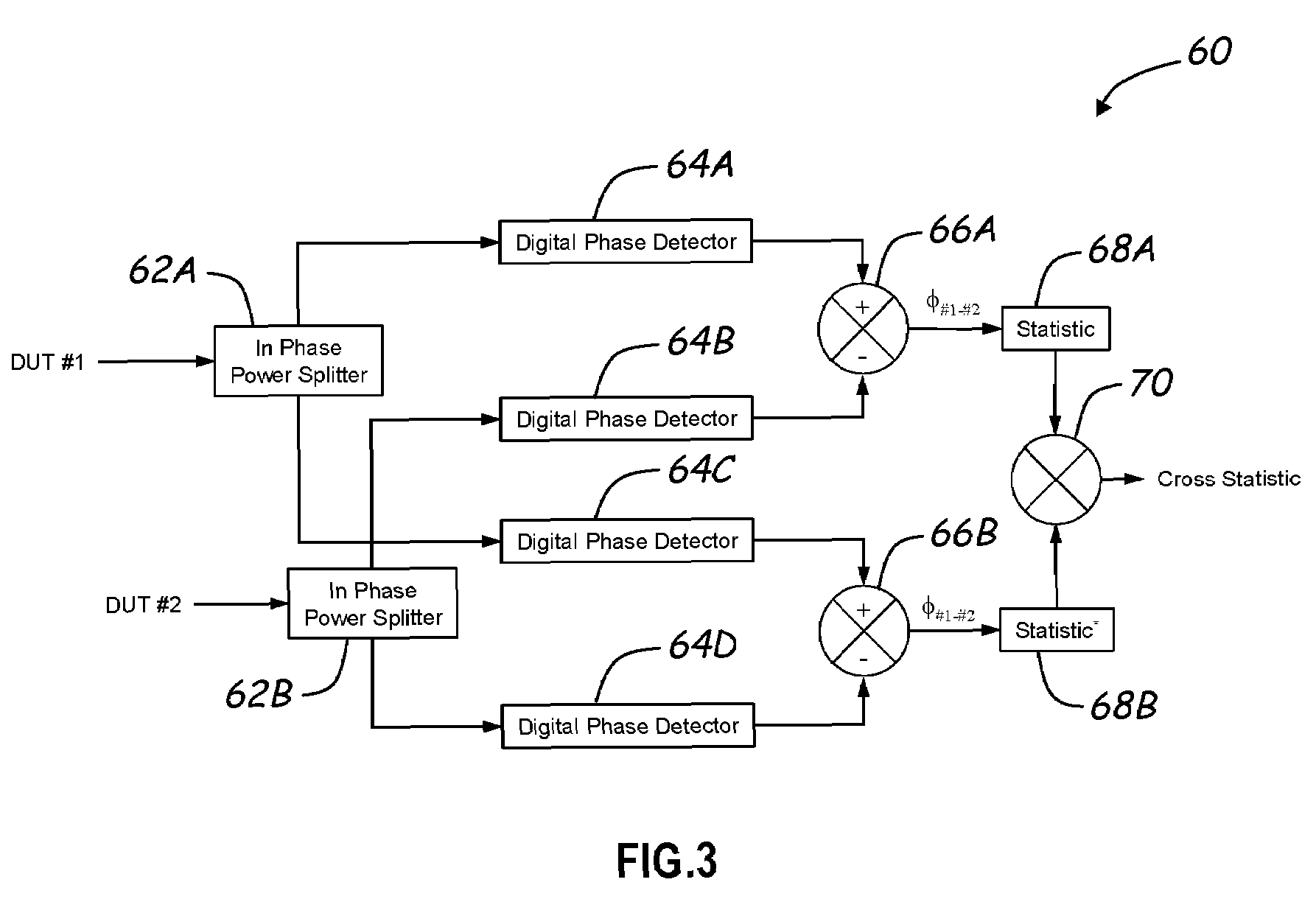Two channel digital phase detector
a digital phase detector and two-channel technology, applied in the direction of resistance/reactance/impedence, digital variable/waveform display, instruments, etc., can solve the problem of phase noise measurement being limited to approximately 150 db/hz below the carrier frequency, and the output signal from averaging substantially below the noise level of a single system, so as to achieve low phase noise measurement
- Summary
- Abstract
- Description
- Claims
- Application Information
AI Technical Summary
Benefits of technology
Problems solved by technology
Method used
Image
Examples
Embodiment Construction
[0013]With reference to FIG. 1, an embodiment of a digital phase detector 10 according to the invention is described. Generally, the digital phase detector 10 is comprised of: (a) a signal splitter and phase shifter 12 for receiving an input signal, the phase of which is to be measured relative to a reference signal, and providing a first signal that is substantially identical to the input signal and second signal that is phase shifted by desired amount relative to the first signal; (b) a first analog-to-digital channel 14A for processing the first signal to produce a first in-phase signal and a first quadrature signal; (c) a second analog-to-digital channel 14B for processing the second signal to produce a second in-phase signal and a second quadrature signal; and (d) a phase detector 16 for processing the first and second in-phase signals and the first and second quadrature signals to produce a phase difference signal that is representative of the difference in phase between the s...
PUM
 Login to View More
Login to View More Abstract
Description
Claims
Application Information
 Login to View More
Login to View More - R&D
- Intellectual Property
- Life Sciences
- Materials
- Tech Scout
- Unparalleled Data Quality
- Higher Quality Content
- 60% Fewer Hallucinations
Browse by: Latest US Patents, China's latest patents, Technical Efficacy Thesaurus, Application Domain, Technology Topic, Popular Technical Reports.
© 2025 PatSnap. All rights reserved.Legal|Privacy policy|Modern Slavery Act Transparency Statement|Sitemap|About US| Contact US: help@patsnap.com



